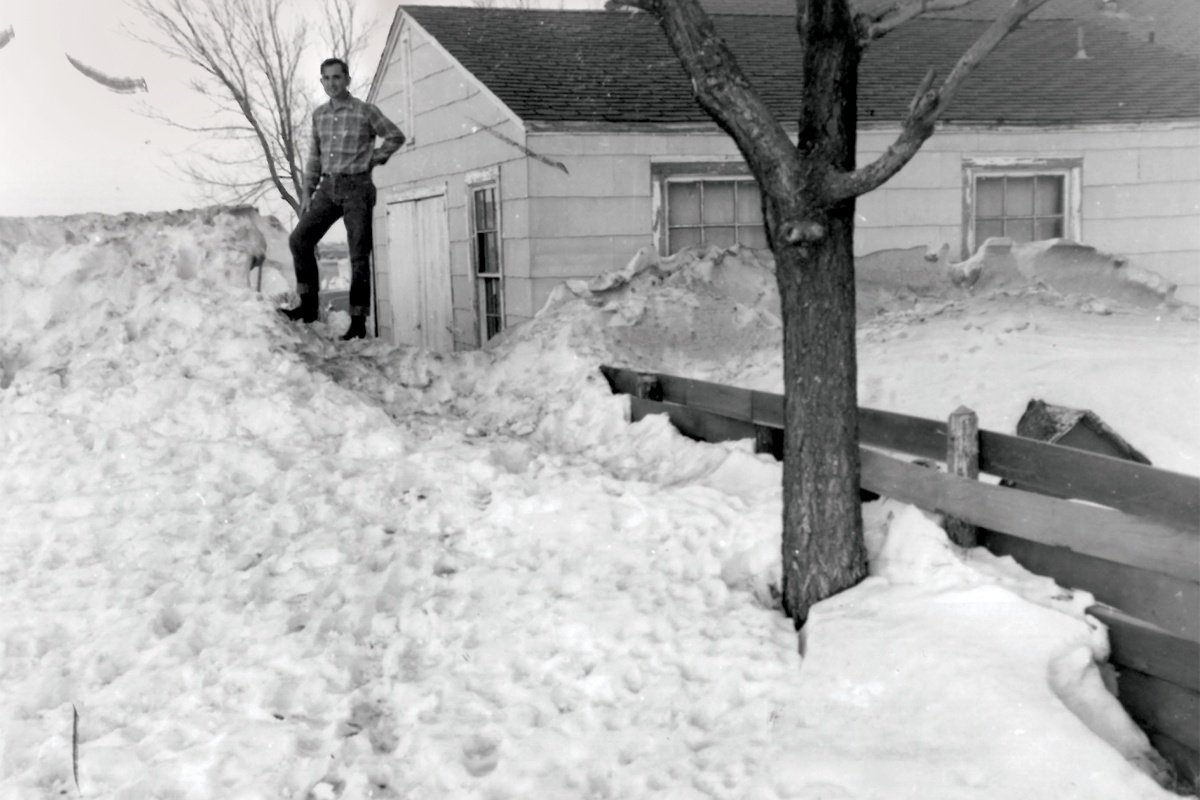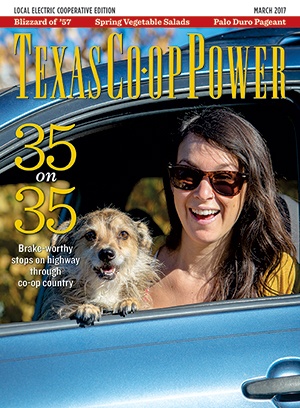Every year as winter sets in, Panhandle residents consider the weather forecast and wonder about predictions for winter storms. Because I grew up in the Panhandle of Oklahoma, I have always listened intently when old-timers told stories about the blizzard of 1957. Seeking to confirm the tales I’d heard over the years, I visited the XIT Museum in Dalhart to find out about this momentous storm that is much discussed on its 60th anniversary.
With the help of Nick Olson, the museum’s director, I searched through newspaper articles and viewed archived news photographs from the blizzard. I found several accounts of survival and destruction. The 1957 storm is considered among the most destructive weather events in Texas Panhandle history.
According to accounts in The Dalhart Texan, the storm arrived in the area during the evening of Friday, March 22. First, rain pelted the area. Then the rain turned to snow, and the storm persisted through the night, pounding the region relentlessly for two days. The storm drove snow across the landscape at speeds up to 60 mph, leaving an accumulation of 10–15 inches. Drifts rose up to 30 feet, according to reports around the Texas Panhandle, with 15-foot drifts recorded across the state line in western Oklahoma. Eleven lives were lost, livestock perished and $6 million in damages were sustained.
The bold banner headline in the Chicago Sunday Tribune on March 24 read: BLIZZARD HITS NINE STATES. Dalhart was one of several Texas towns identified on a locator map on the front page.
Hundreds of cattle, hogs and horses were lost. Arty Watkins, a local farmer and cattleman, told The Dalhart Texan that he thought he had lost a lot of hogs in the blizzard when he couldn’t find them. While hunting for them, he saw steam coming from a big snowdrift. Just to find out whether he was imagining the steam, he dug into the drift, and out walked 20 of his hogs.
Chuck Bennet, a current member of Rita Blanca Electric Cooperative and a resident of the Dumas area, told the story of a rancher south of Dumas who lost more than 10 prized Palomino horses. The rancher had moved the horses into a barn for protection from the blizzard, but it was not enough. As the wind battered the barn, it also drove snow through the cracks in the barn’s walls. Eventually the snow reached the rafters of the barn, and the horses perished.
A delivery driver in Dalhart became a casualty of the storm when he lost his way on the return to his home from the Railway Express Agency. According to The Dalhart Texan, the driver became disoriented in the blinding, blowing blizzard. After he made a wrong turn, his truck got stuck in the deep snow. His vehicle was covered completely by the snow, and he was unable to escape.
The snowfall accumulated into drifts that covered houses up to the rooflines, trapping residents inside. In some houses, blowing snow filled up attics, requiring occupants to scoop out the snow so ceilings would not collapse.
The blizzard of 1957 ranks third among the top 10 weather events of the 20th century in the Texas and Oklahoma Panhandle, a list prepared by the Amarillo staff of the National Weather Service.
The nearly decade-long Dust Bowl of the 1930s ranks No. 1, and the April 9, 1947, tornado that killed more than 180 people as it rampaged across Texas, Oklahoma and Kansas ranks second.
I walked away from the research at the XIT Museum with a renewed respect for those who braved this storm and are able to retell the tales 60 years later. So as I watch the weather forecast and prepare for upcoming storms, I will forever remember the blizzard of 1957 and pray that another of this magnitude never befalls my beloved Texas Panhandle.
——————–
Dawn Stephens is the member services and communications representative for Rita Blanca Electric Cooperative in Dalhart.


